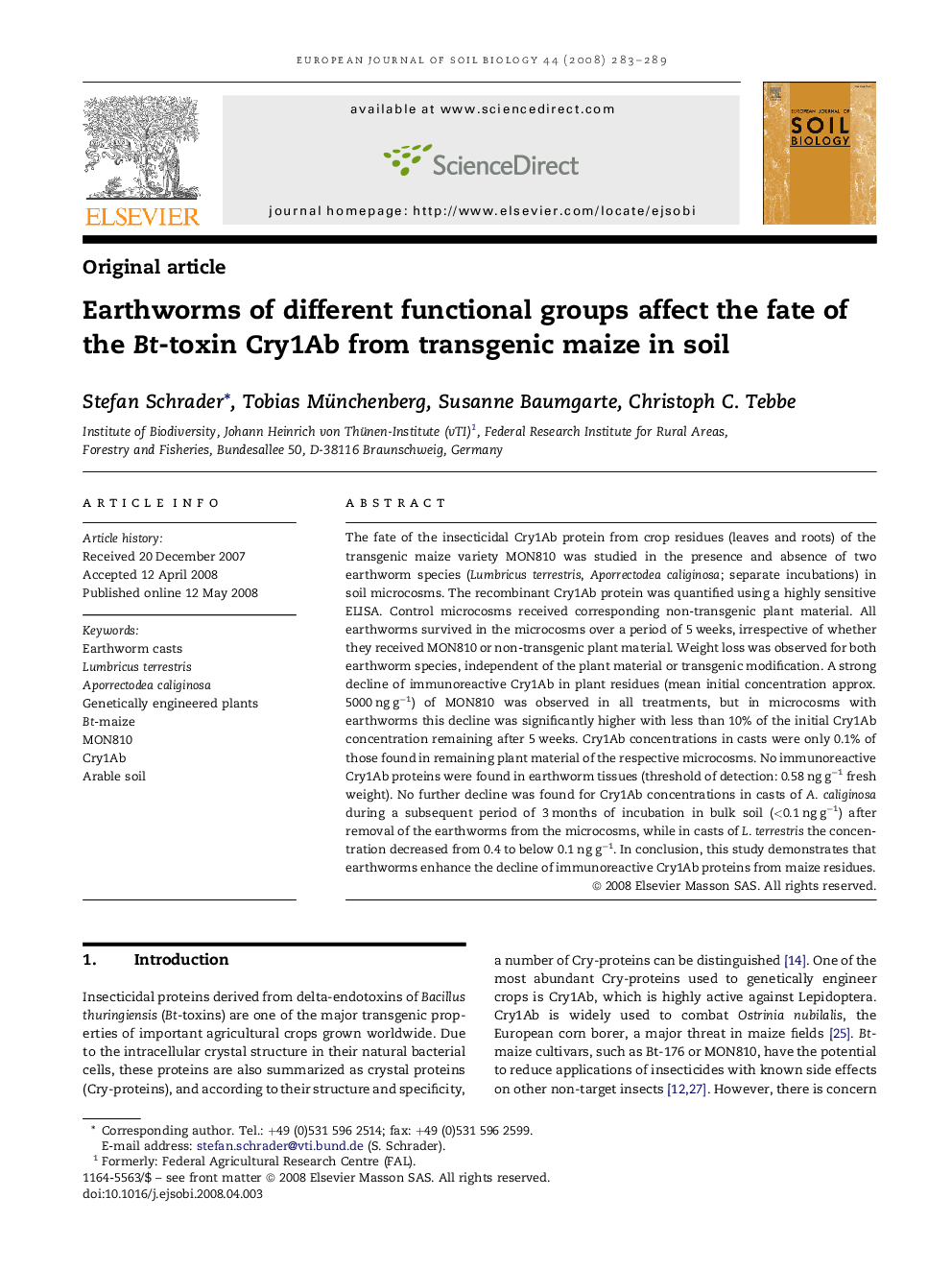| Article ID | Journal | Published Year | Pages | File Type |
|---|---|---|---|---|
| 4392316 | European Journal of Soil Biology | 2008 | 7 Pages |
Abstract
The fate of the insecticidal Cry1Ab protein from crop residues (leaves and roots) of the transgenic maize variety MON810 was studied in the presence and absence of two earthworm species (Lumbricus terrestris, Aporrectodea caliginosa; separate incubations) in soil microcosms. The recombinant Cry1Ab protein was quantified using a highly sensitive ELISA. Control microcosms received corresponding non-transgenic plant material. All earthworms survived in the microcosms over a period of 5 weeks, irrespective of whether they received MON810 or non-transgenic plant material. Weight loss was observed for both earthworm species, independent of the plant material or transgenic modification. A strong decline of immunoreactive Cry1Ab in plant residues (mean initial concentration approx. 5000 ng gâ1) of MON810 was observed in all treatments, but in microcosms with earthworms this decline was significantly higher with less than 10% of the initial Cry1Ab concentration remaining after 5 weeks. Cry1Ab concentrations in casts were only 0.1% of those found in remaining plant material of the respective microcosms. No immunoreactive Cry1Ab proteins were found in earthworm tissues (threshold of detection: 0.58 ng gâ1 fresh weight). No further decline was found for Cry1Ab concentrations in casts of A. caliginosa during a subsequent period of 3 months of incubation in bulk soil (<0.1 ng gâ1) after removal of the earthworms from the microcosms, while in casts of L. terrestris the concentration decreased from 0.4 to below 0.1 ng gâ1. In conclusion, this study demonstrates that earthworms enhance the decline of immunoreactive Cry1Ab proteins from maize residues.
Related Topics
Life Sciences
Agricultural and Biological Sciences
Soil Science
Authors
Stefan Schrader, Tobias Münchenberg, Susanne Baumgarte, Christoph C. Tebbe,
